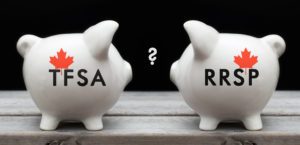Understanding tax free savings accounts can be profitable
January 3, 2019
 Understanding how best to use a Tax Free Savings Account (TFSA) could prove to be very profitable.
Understanding how best to use a Tax Free Savings Account (TFSA) could prove to be very profitable.
Let’s start with the news. The annual contribution limit has increased for 2019 to $6,000, up from $5,500 for the previous three years.
Contributions to a TFSA are not income tax deductible like those to a RRSP. However, unlike a RRSP there is no tax liability when funds are withdrawn.
That has benefits. If you withdraw TFSA funds while you have a relatively high income, then any withdrawn money will not increase your tax liability.
Also, if you invest TFSA funds in stocks that appreciate over time then you can eventually withdraw significantly more funds than you invested, also tax free.
That brings us to a mistake many people make when deciding how to invest within their TFSA. Investing for a long-term with low paying fixed income options, like a bank savings account, is a lost opportunity.
Yes, you will be able to withdraw funds tax free decades down the road, but a low yielding investment will only produce a small gain. Instead, choose an investment that will have a good likelihood of paying more impressive returns.
The key here is your investing time frame. If you are investing for a long period, you have time to recover from any losses caused by stock market volatility.
However, if you will need these funds in just a few years you would not have time to recover from a notable stock market decline.
In most cases short-term investing is better with lower paying investments that are not subject to sudden and significant declines in value.
TFSAs offer important benefits and as said at the start of this column they can be very profitable.
I encourage you to understand how a TFSA can best be used in your personal circumstances.
